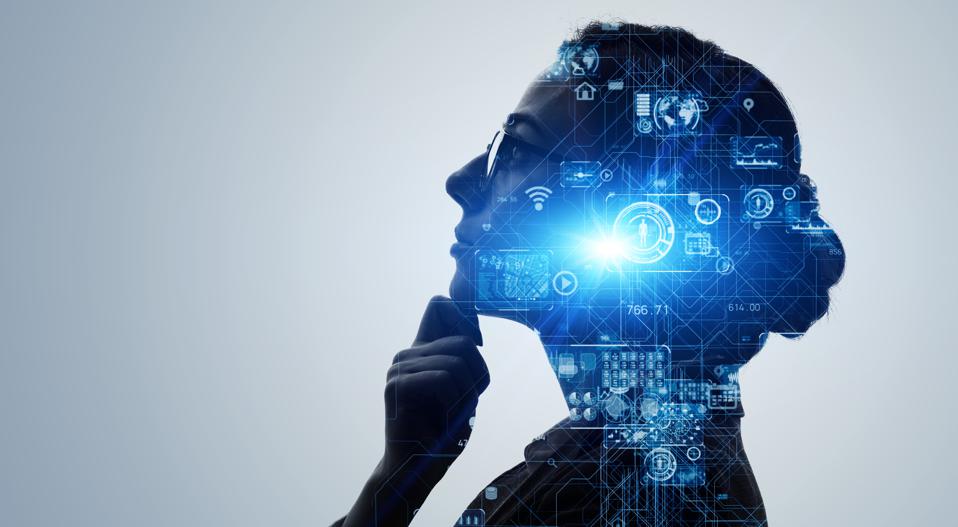Peter is Chief Marketing Officer at Interactions, a leader in conversational AI.
Automation is the hot-button issue of 2023. You’re hearing about it via an automation subset called generative artificial intelligence (AI), which is the process of re-creating and repackaging content in new ways based on existing content.
And what is the most common example of generative AI right now? It’s ChatGPT. In a nanosecond, people have gained strong opinions about ChatGPT, and by extension, automation itself.
Is it the productivity silver bullet we’ve been waiting for? Or is it an existential threat?
The answer is yes.
ChatGPT and tools like it have entered our collective lives at the perfect time. We’re witnessing a confluence of events forcing businesses to think hard about their revenue, shrinking margins, labor productivity and innovation curve. Amid economic uncertainty comes a new way of thinking and doing.
I used to work in a Silicon Valley technology incubator where the words “Innovate or Die” were painted on the wall. Almost religiously, young engineers would tap them for good luck as they walked past. The words were true then. They are truer today and even more true tomorrow.
But we have to be careful as we dive into this fast-moving world. Automation can be a boon to productivity—but it can also have severe consequences if it’s not curated and managed. Over the next five years, the deciding factor of your business automation success won’t be the technology—it will be the human touch that guides it.
The Perfect Storm
Many businesses are feeling the heat. From the remarkably odd bedfellows of inflation and recession fears combined with ongoing labor shortages, the financial pressures on businesses are serious. The free ride of expansion and exploration since 2009 is over. Many leaders are quickly realizing that current work models are unsustainable if they want to pace with market expectations.
During the height of the pandemic, automation stepped up to help companies curb costs and boost profitability. In fact, the average number of AI capabilities that organizations are using doubled from 2018 to 2022, with robotic process automation (RPA) emerging as one of the most commonly deployed each year. You’ve probably seen this in action: Think of grocery store robots, often used to plug gaps in the workforce and supply chain.
When economic conditions are this uncertain, technology can offer a constant, enabling resilience even in times of crisis. So it’s not a surprise that many leaders are scrambling to implement automation now more than ever—and often, they’re doing it as fast as they can.
Ditching Band-Aid Solutions
But automation is not a panacea for businesses. It has to be done thoughtfully—not just quickly. That’s why companies that go too far, and assume they can simply cut humans out of the loop during the implementation process, are making a big mistake. Think of the businesses that have done things like eliminating their customer service phone lines or those that have entrusted their push notifications to bots, with serious consequences.
Tunnel-vision strategies like these only alienate consumers. Why? Put simply, the human touch is unbeatable—and irreplaceable. This is especially salient in my industry, customer service. A whopping 82% of Americans want the human touch to come back to their customer experiences. That’s understandable. Once you see that a company is willing to sacrifice quality in favor of a little cost-cutting, it’s all over.
Understaffed and under pressure, businesses might be tempted to choose these types of band-aid solutions. But they’re unsustainable when it comes to retaining loyalty and trust. Of course, this doesn’t necessarily mean companies should avoid automation—it’s important, and it’s not going anywhere. All it means is that they need to implement it intentionally, in a way that improves on their existing systems. That way, the technology can help rather than hurt.
Digitizing The Human, Humanizing The Digital
The key to success in this automation dilemma is to prioritize technology that’s got the human element baked into it: something that’s both human-like and human-compatible.
I’ve seen firsthand why this approach is so crucial. At my own company, we started in 2004 with an automated customer-support solution that had a constant interplay between AI and human support. Back then, if the AI could not understand a customer’s request, a human would listen to a snippet of the conversation and nudge the call forward. We did that because 20 years ago AI was immature. Today, over 90% of all conversations are AI-processed, but we still use the human touch for the occasional hard-to-manage utterances. The result of this interplay is very high accuracy on every customer-support request. That’s the difference between a system that makes you engage in robot-speak and a system that lets you engage in your own words. We do this nearly a half-billion times annually. So I say with confidence that the “AI + Human” combination is the secret behind sustainable automation adoption.
What does this look like in practice? It might be self-driving tractors doing the repetitive tilling and fertilizing, leaving farmers to do the more strategic harvest planning. Or warehouse robots doing the lifting and sorting, enabling managers to work smarter and not harder. (Disclosure: My company collaborates with Nvidia Riva.) In my industry’s case, it’s often virtual assistants handling many customer service transactions, allowing contact center agents to spend their time working through more complex, empathy-driven interactions with callers. In each of these scenarios, the technology augments humans—and makes every touchpoint more efficient and successful.
That is what automation needs to look like.
Forbes Communications Council is an invitation-only community for executives in successful public relations, media strategy, creative and advertising agencies. Do I qualify?

